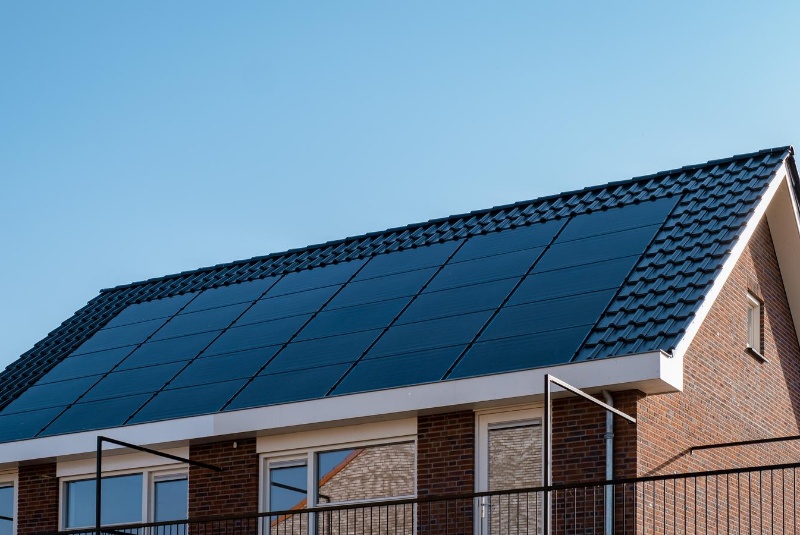In the age of streaming, gaming, and internet browsing, a television is no longer just a device for passive watching; it has evolved into a smart hub of entertainment and information. With an array of features, applications, and services, smart televisions have revolutionized the way we consume media. However, this revolution brings with it a labyrinth of choices and considerations. Here’s your compass to navigate the world of smart televisions and make an informed buying decision.
Understanding Smart Televisions
Before we delve into what to look for, let's define what makes a TV "smart." A smart TV connects to the internet, allowing access to a multitude of services including streaming platforms like Netflix and Hulu, social media, and even web browsing. It has an operating system/platform that lets you manage, download, and use apps, much like a smartphone.
The Key Features to Consider
When purchasing a smart TV, several factors come into play. Here’s what to keep in mind:
1. Screen Size and Resolution
One of the most significant considerations is screen size. The ideal size for your room can be calculated by the distance from your viewing spot to the television’s location. The recommended viewing distance is about 1.5 times the TV’s diagonal size.
After size, comes resolution. HD (720p) and Full HD (1080p) are becoming outdated as 4K Ultra HD TVs, with their 3840 x 2160 pixels, become the norm. Some TVs offer 8K resolution (7680 × 4320), but with 8K content still scarce, 4K provides the best bang for your buck.
2. Operating System
The operating system determines the user interface and available apps. Popular systems include Android TV, Roku TV, Tizen (Samsung), and webOS (LG). Each offers a unique selection of apps and user experience. Choose an OS that’s intuitive for you and supports the apps you use most.
3. HDR Compatibility
High Dynamic Range (HDR) enhances the color and contrast of the picture. Look for TVs that support HDR10, Dolby Vision, or Hybrid Log Gamma (HLG). HDR10 is the standard, but Dolby Vision adjusts the picture dynamically, scene by scene, which can make for better quality — if you have the content that supports it.
4. Refresh Rate
The refresh rate, the number of times the TV refreshes the image on screen per second, is measured in Hertz (Hz). A 60Hz refresh rate was once standard, but 120Hz has become more common, reducing motion blur and making for smoother images. This is especially important for fast-moving scenes in sports or action movies.
5. Connectivity
Consider the number and types of connections the TV supports. HDMI ports are crucial — the more, the better. Also, look for Wi-Fi and Ethernet for internet connectivity, Bluetooth for connecting wireless headphones or speakers, and USB ports for viewing content from external devices.
6. Audio Quality
While smart TVs are becoming slimmer, sometimes, this compromises the sound quality. Look for TVs with built-in Dolby Atmos or DTS:X for a more immersive sound experience. You might also consider a soundbar or a surround-sound system for a richer audio experience.
7. Remote Control and Voice Assistance
Remote control design and functionality can affect your user experience. Some smart TVs come with voice-assisted remotes that let you speak commands. Compatibility with universal remotes or integration with smart home systems like Amazon Alexa, Google Assistant, or Apple HomeKit might also be a priority for you.

Balancing Price and Performance
1. Budgeting for the Basics
The price of smart TVs can vary widely. Determine your budget by considering which features you can't do without and which you’re willing to compromise on. Keep in mind that a higher price doesn’t always guarantee a better viewing experience.
2. Brand and Warranty
The brand can influence the price, but it can also be a testament to quality and reliability. Do some research on the manufacturer’s warranty, customer service, and repair services before making your decision.
Future-proofing Your Purchase
Choosing a smart TV that can stand the test of time is a savvy move. Opt for a TV with the latest version of its operating system, a 4K or higher resolution, and technology like HDMI 2.1, which supports higher resolutions and frame rates — important for future gaming consoles and media.
Extra Features and Considerations
1. Gaming Features
If you’re a gamer, look for features like a low input lag, high refresh rate, and compatibility with the latest gaming consoles.
2. Energy Consumption
Energy efficiency not only helps the environment but can also save you money on your electricity bill. Look for ENERGY STAR certified TVs.
3. Mounting and Installation
Consider how the TV will fit into your space. Check whether the stand is sturdy or if wall-mounting is a possibility.
4. Accessibility Features
For those with visual or hearing impairments, features like voice guidance, screen readers, or closed captioning might be crucial.
The Smart TV Ecosystem
1. App Availability
The variety and availability of apps can be dependent on the TV’s operating system. Make sure your preferred streaming services and apps are supported.
2. Updates and Support
Check how often the TV's software is updated and how long the manufacturer offers support for the model. You don’t want to be left with an obsolete TV after a couple of years.
Making the Smart Choice
To make the smart choice, list down what you expect from your TV. Are you looking for the highest possible resolution, or is the smart interface more important? Is the TV's integration into a smart home ecosystem a deal-breaker for you?
Testing the Waters
Whenever possible, view the TV in person. Check the interface's ease of use, the quality of the image, and the sound. Use this experience to compare different models and brands.
Where to Buy
Whether you buy in-store or online, consider the delivery options, return policy, and available warranties. Sometimes, physical retailers will match online prices, so it’s worth asking.
Navigating the world of smart televisions can seem daunting, but armed with the right information, you can choose the perfect device for your needs. Remember to balance your budget with the features that are most important to you. Keep future-proofing in mind to get the most out of your investment for years to come. With the right approach, your smart TV can become more than just an entertainment device; it can be the centrepiece of a connected and highly personal digital experience.




